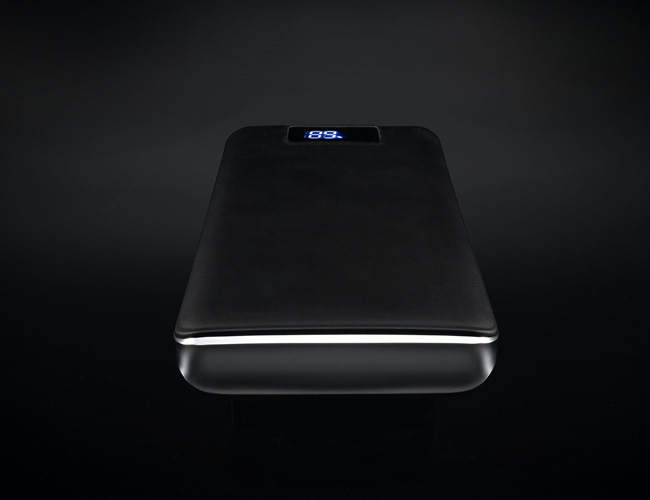iOS accessibility features benefit all users, not just those with disabilities. By making your app accessible, you improve the user experience for everyone.
In this section, we’ll cover some of the most important design considerations for building accessible iOS apps. We’ll start with a brief overview of iOS accessibility features and how they can be used to benefit all users. Then, we’ll discuss some specific design considerations for making your app accessible to users with different types of disabilities.
iOS Accessibility Features
iOS includes a variety of built-in accessibility features that can be used to improve the user experience for all users, including those with disabilities. Some of the most useful accessibility features include:
VoiceOver: VoiceOver is a screen reader that reads aloud the contents of the screen and describes actions that can be taken. VoiceOver can be enabled in Settings > General > Accessibility > VoiceOver.
Zoom: Zoom allows users to magnify the entire screen or parts of the screen. Zoom can be enabled in Settings > General > Accessibility > Zoom.
Display Accommodations: Display accommodations allow users to customize the display of their device to meet their needs. For example, color filters can be used to improve contrast or reduce glare. Display accommodations can be enabled in Settings > General > Accessibility > Display Accommodations.
Switch Control: Switch Control allows users who cannot use a touchscreen to control their device using switches or other input devices.
Understanding the Accessibility Needs of Users with Disabilities
There are a variety of disabilities that can impact a person’s ability to use an iOS device, from visual impairments to motor skills impairments. As an app developer, it’s important to be aware of the different types of accessibility needs and how they can impact users.
Some common accessibility features that are built into iOS devices include VoiceOver, which provides spoken descriptions of what’s on the screen; Zoom, which magnifies the screen; and Siri, which allows users to control their device using voice commands. There are also a number of third-party apps and accessories that can help people with disabilities use their iOS devices, such as Switch Control and Braille displays.
When designing your app, keep in mind that not all users will have the same level of ability or need for accessibility features. For example, someone who is blind may need to rely heavily on VoiceOver, while someone with low vision may only need to use it occasionally. Similarly, someone with limited mobility may need to use Switch Control or another assistive technology to interact with your app, while someone without any mobility impairments may not need any special accommodations.
Think about how your app can be used by people with different types of disabilities and design accordingly. If you’re not sure how to make your app accessible for a particular type of disability, there are many resources available online (such as the Apple Accessibility website) that can help you get started.
Design Considerations for Users with Disabilities
When designing iOS apps, it’s important to consider the needs of users with disabilities. There are a number of design considerations that can make your app more accessible to these users, including:
- Use of color and contrast: Be sure to use colors and contrasts that are easy for all users to see. This is especially important for users with vision impairments.
- Use of text: Make sure your text is large enough and clear enough for all users to read. This is especially important for users with vision impairments or low vision.
- Use of audio: Consider using audio cues in your app to help guide users with vision impairments. This can be helpful for navigation and performing tasks within the app.
- Use of touch: Design your interface in a way that is easy for all users to interact with, regardless of their level of motor skills. This includes things like making buttons large enough to be easily tapped, and avoiding complex gestures that may be difficult for some users to perform.
Challenges and Solutions for Building Accessible iOS Apps
There are many challenges to consider when building accessible iOS apps. One challenge is that some disabilities can make it difficult or impossible to use a touchscreen. Another challenge is that some people with disabilities may not be able to see or hear the audio and visual cues that are typically used in iOS apps.
Some solutions to these challenges include using voice-over technologies and alternative input methods. Voice-over technologies can provide auditory cues for people who cannot see the screen, and alternative input methods can provide tactile feedback for people who cannot use a touchscreen.
Integrating VoiceOver into Your iOS App
VoiceOver is a screen reader built into Apple’s iOS operating system. It provides visual feedback of the user interface elements on screen, and speaks aloud the labels, values, and hints associated with them. Developers can use VoiceOver to test the accessibility of their iOS apps.
When integrating VoiceOver into your app, there are several design considerations to keep in mind:
- Make sure all UI elements have labels that accurately describe their purpose and function.
- Group related UI elements together so that they can be navigated as a single unit.
- Use voiceover hints to provide additional information about UI elements, if needed.
- Test your app with VoiceOver to ensure that it is accessible and easy to use.
Tips for Designing Accessible User Interfaces
When designing accessible user interfaces, there are a few things to keep in mind. First, you need to make sure that the interface is easy to use for people with disabilities. This means making sure that all controls are easy to reach and easy to use. You also need to make sure that the interface is easy to read and understand. This means using clear and concise text and using high-contrast colors. Finally, you need to make sure that the interface is compatible with assistive technologies such as screen readers. This means ensuring that all controls are properly labeled and that all text is readable by screen readers. By following these tips, you can design an accessible user interface that will be usable by people with disabilities.
Testing Your App’s Accessibility
When you’re developing an iOS app, it’s important to consider the needs of users with disabilities. Testing your app’s accessibility is a crucial part of the development process to ensure that everyone can use your app.
There are a few different ways to test your app’s accessibility. One way is to use the Accessibility Inspector in Xcode. This tool will help you identify any potential accessibility issues in your app’s UI.
Another way to test is to use the Simulator Accessibility features. You can turn on various accessibility features in the Simulator, such as VoiceOver and Zoom, and test how your app works with them enabled.
Finally, it’s always a good idea to get feedback from actual users with disabilities. They can give you insights into how accessible your app really is and what improvements can be made.
Conclusion
Building accessible iOS apps is an important step towards making our digital world more inclusive and diverse. By considering the design needs of users with disabilities, developers can create experiences that are not only usable for everyone but also enjoyable. Additionally, incorporating accessibility features into your app will open up new opportunities to engage with customers who may have been previously excluded from utilizing technology due to their disability. With this in mind, we hope you found this article useful and feel empowered to start building accessible iOS apps today!



